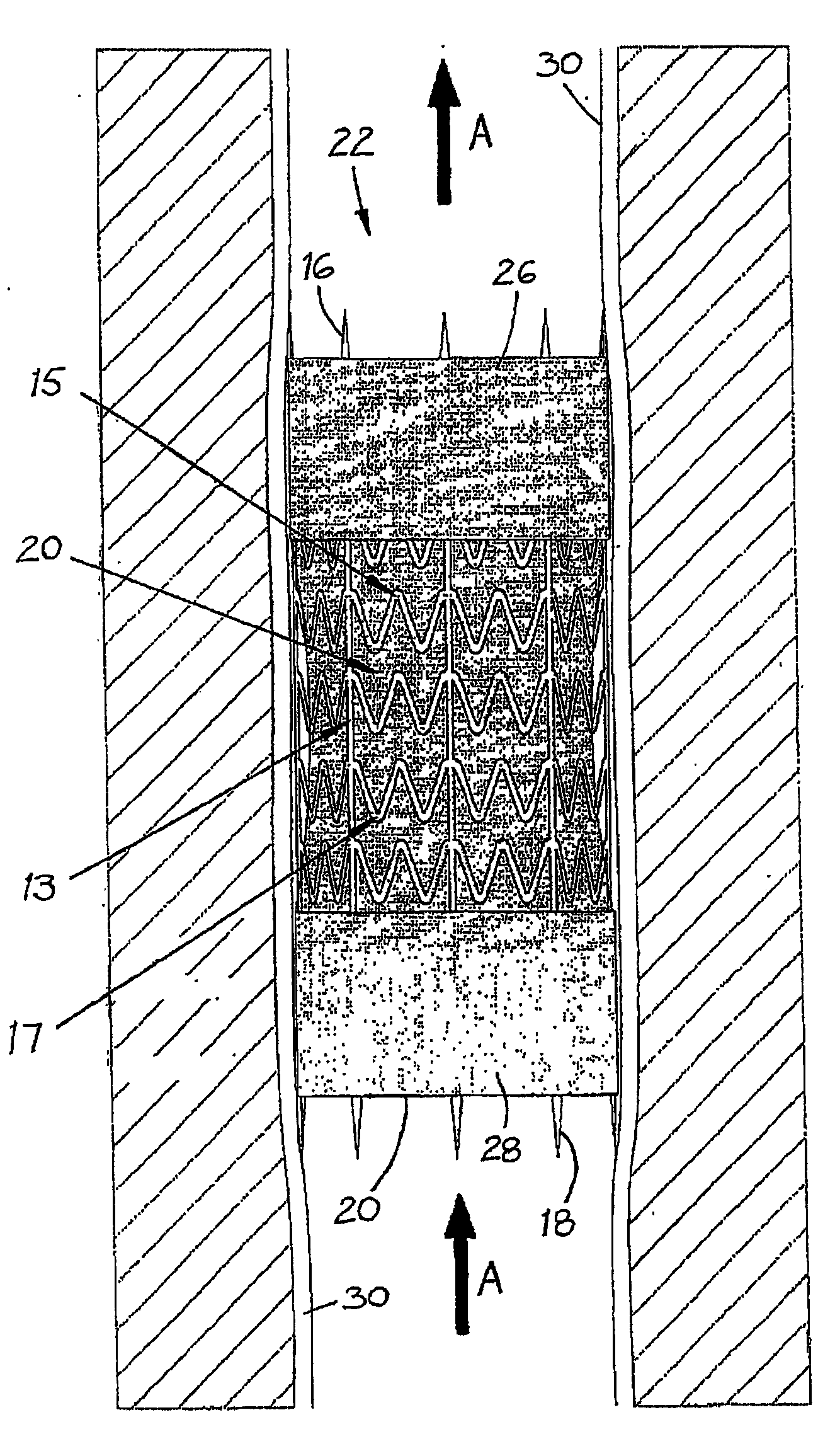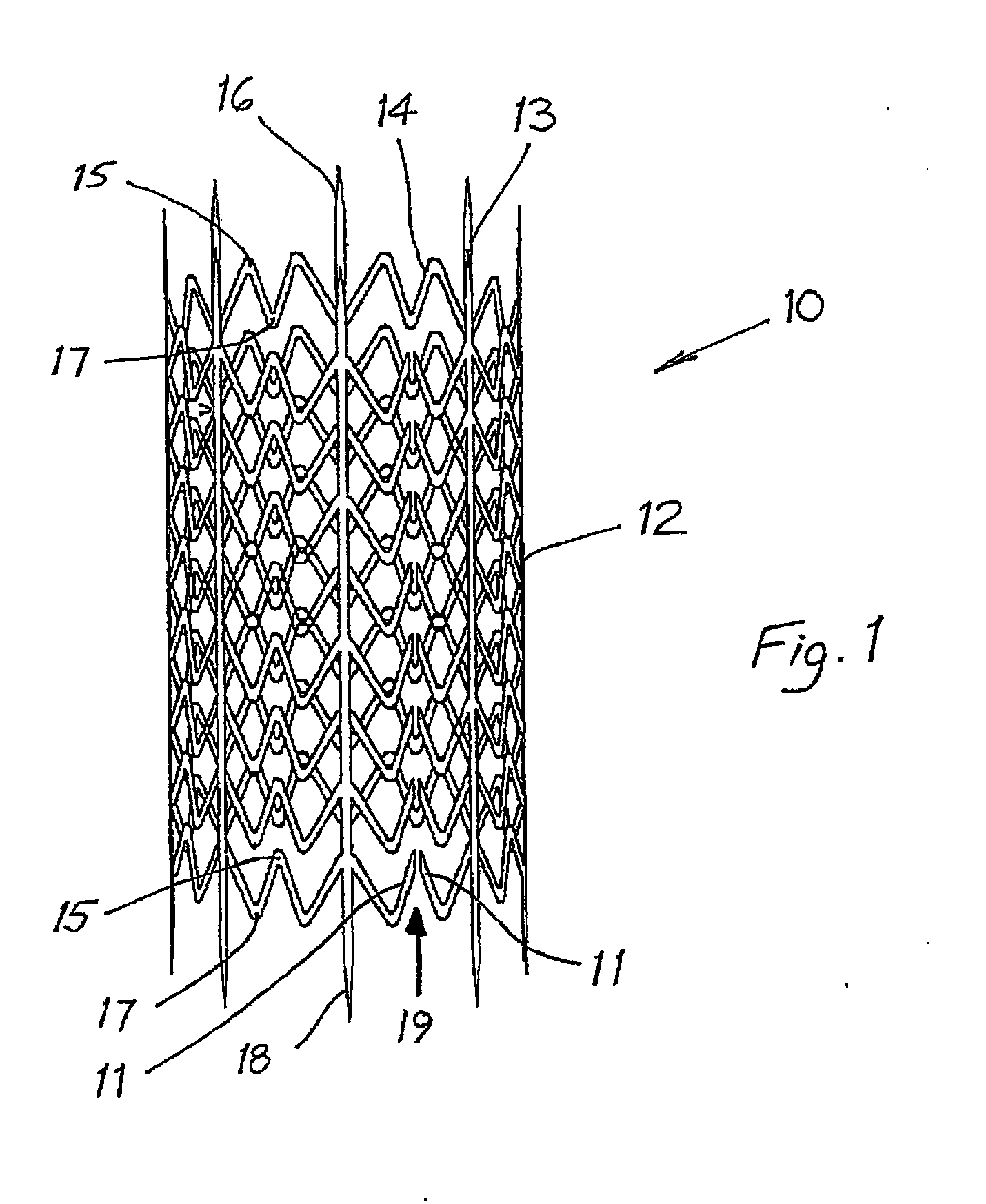Endovenous valve transfer stent
- Summary
- Abstract
- Description
- Claims
- Application Information
AI Technical Summary
Benefits of technology
Problems solved by technology
Method used
Image
Examples
example 1
[0031]Subjects. Sixteen sheep weighing between forty-five to fifty kilograms were used in the study. The investigative protocol was approved by the Animal Ethics Committee of the Northern Sydney Central Coast Health Service.
[0032]Stent Materials. NITINOL (nickel titanium alloy) was chosen to take advantage of its super-elastic properties including its self-expansion capability and a very low mass expansion ratio. The lower profile allows minimisation of the delivery system. NITINOL has known and reproducible bio-compatibility. The fatigue deformity strength and electromagnetic profiles and stress strain characteristics are well documented and easy to test. NITINOL itself is easy to shape and it also has shape memory characteristics which allow crimping capability when cooled.
[0033]Stent Design. A preferred endovenous valve transfer stent (EVTS) is shown in FIG. 1.
[0034]1. To maximise wall fixation, the following EVTS structural features were included:[0035]a. Spikes (3 mm in length)...
example 2
[0062]Case Report. A sixty-three year old man presented with a thirty-four year history of virtually continuous right lower limb chronic venous ulceration following an extensive DVT related to severe trauma. Treatment over the years consisted of continuous graduated compression, multiple failed skin grafts and a high ligation and stripping of the great saphenous vein plus other ablative venous procedures. He had multiple infective problems including multiple admissions to hospital for recurrent septicaemia. At the time of the EVTS procedure his ulcer area was 45 cm2. A Venogram and duplex ultrasound of his left upper limb both demonstrated competent valves with internal diameters (ID) of 9 mm and 7 mm. Descending venography showed Grade IV reflux that extended from the femoral veins down to and including the infrapopliteal systems. Extensive post-phlebitic intraluminal changes were noted including vein wall thickening and irregularity. The popliteal vein ID varied between 8-10 mm.
[0...
PUM
 Login to View More
Login to View More Abstract
Description
Claims
Application Information
 Login to View More
Login to View More - R&D
- Intellectual Property
- Life Sciences
- Materials
- Tech Scout
- Unparalleled Data Quality
- Higher Quality Content
- 60% Fewer Hallucinations
Browse by: Latest US Patents, China's latest patents, Technical Efficacy Thesaurus, Application Domain, Technology Topic, Popular Technical Reports.
© 2025 PatSnap. All rights reserved.Legal|Privacy policy|Modern Slavery Act Transparency Statement|Sitemap|About US| Contact US: help@patsnap.com



